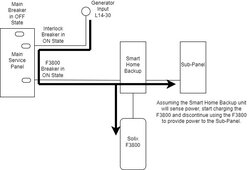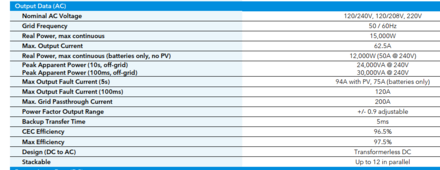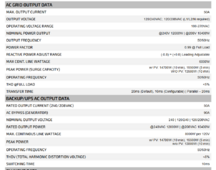Solar_newb
New Member
- Joined
- Feb 19, 2021
- Messages
- 5
Our electric provider has some pretty random outages. I currently have a 22kW Generac feeding ann auto transfer switch which ties to my 200 amp service. What I would like to do is have a battery backup to that can sustain this for a short period of time for true uninterruptible power. Currently we get some random outages of 10 or so seconds which triggers the generator and sometimes the transfer switch never actually switches because the power is back on. In the end, I would like to go solar, but for now I was thinking a battery bank and an all in one or something similar that would solve the current problem. This would require a generator output from the controller or a way to trigger the ATS.I am looking for suggestions.






